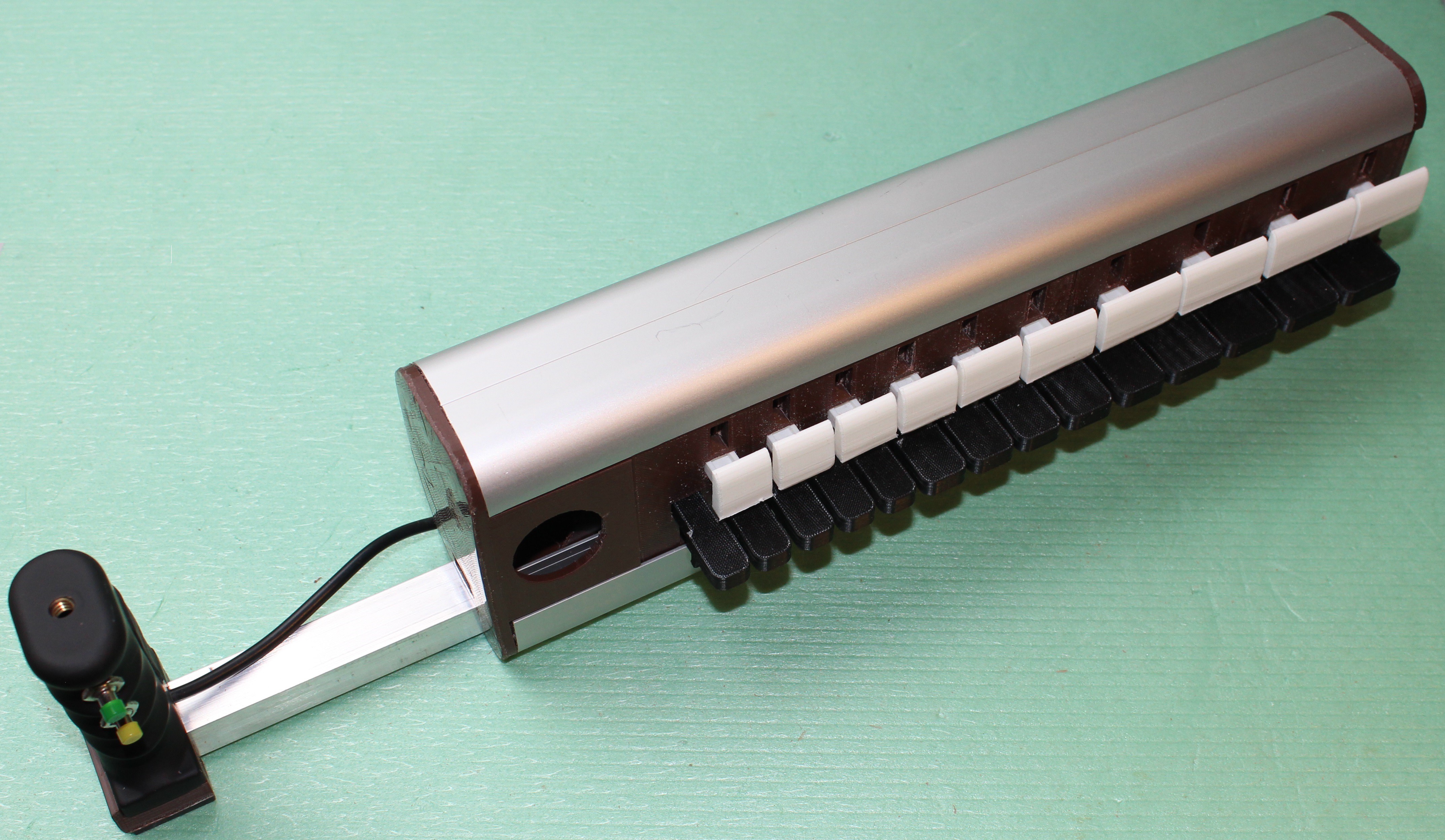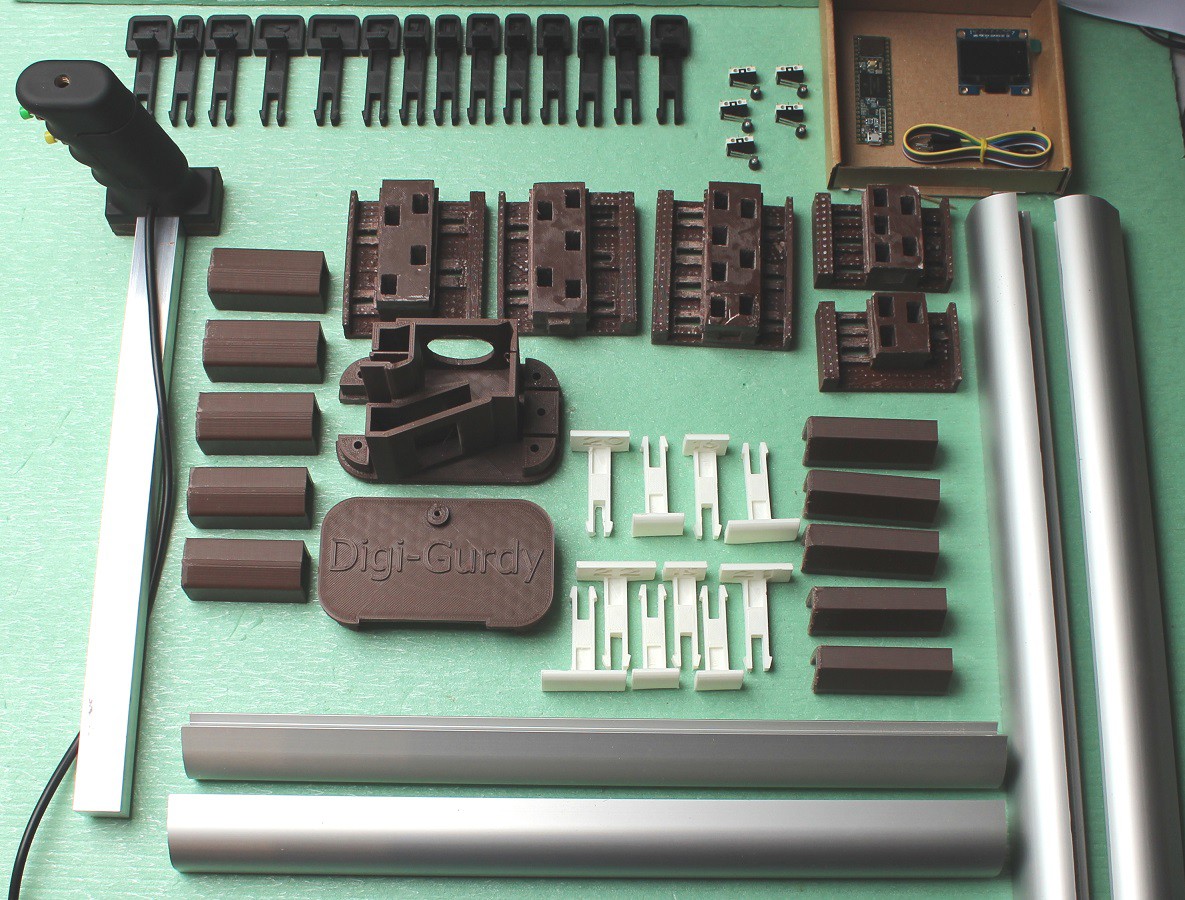Here is a video outlining the main features of a hurdy gurdy, the instrument we are aiming to partially emulate with an electronic practice version.
The Digi-Gurdy presents two challenges. The first is the physical design and the second will be the internal electronics. It must be compact, have keys with the same layout as a real hurdy gurdy and while looking good, must be potentially capable of manufacture at reasonable cost. Current experiments combine 3D printed parts which could ultimately be made of plastic in combination with a frame which includes aluminium extrusions.

- There are ongoing experiments in an attempt to simulate a crank handle but for now a rigid handle is provided for the right hand, which helps you stabilize the device on your lap while playing the keys with your left hand. This may end up being the best compromise.
- This handle is a commercially available plastic pistol-grip handle for cameras.
- It has been fitted to an alloy bar which slides telescopically out of the body of the Digi-Gurdy.
- This keeps the device compact and portable.
- The OLED screen has been relocated into the main body of the device to improve ruggedness.
- The keys are no longer held in place by a small bolt through their tail ends but now reversibly snap into place. This will reduce assembly time and allow easy replacement if ever damaged.
- The micro switches for each key also now push-fit into their sockets without requiring glue to hold them in place. I am now also using roller switches as they give a great feel to the key action.
- I could use resistance wire, contacted by the keys, or a ribbon potentiometer. This would reduce the quantity of wiring, however microswitches will probably be more reliable after heavy use, are designed to operate many thousands of times, give a good feel on each keypress and also return the keys well to their start positions after being pressed.
The video below outlines the main aspects of the physical design. The electronics will be the subject of future updates.
Here are the main parts laid out on the bench.

 XenonJohn
XenonJohn
Discussions
Become a Hackaday.io Member
Create an account to leave a comment. Already have an account? Log In.